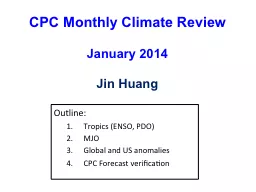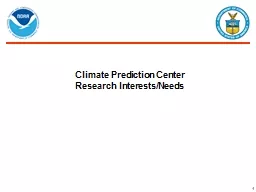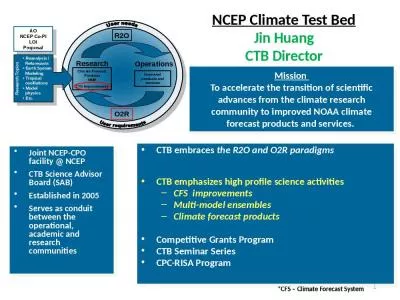PPT-CPC Monthly Climate Review
Author : risilvia | Published Date : 2020-06-29
January 2014 Jin Huang Outline Tropics ENSO PDO MJO Global and US anomalies CPC Forecast verification 2 Tropics ENSO PDO ENSO Neutral 3 Dec 2013 is similar
Presentation Embed Code
Download Presentation
Download Presentation The PPT/PDF document "CPC Monthly Climate Review" is the property of its rightful owner. Permission is granted to download and print the materials on this website for personal, non-commercial use only, and to display it on your personal computer provided you do not modify the materials and that you retain all copyright notices contained in the materials. By downloading content from our website, you accept the terms of this agreement.
CPC Monthly Climate Review: Transcript
Download Rules Of Document
"CPC Monthly Climate Review"The content belongs to its owner. You may download and print it for personal use, without modification, and keep all copyright notices. By downloading, you agree to these terms.
Related Documents













